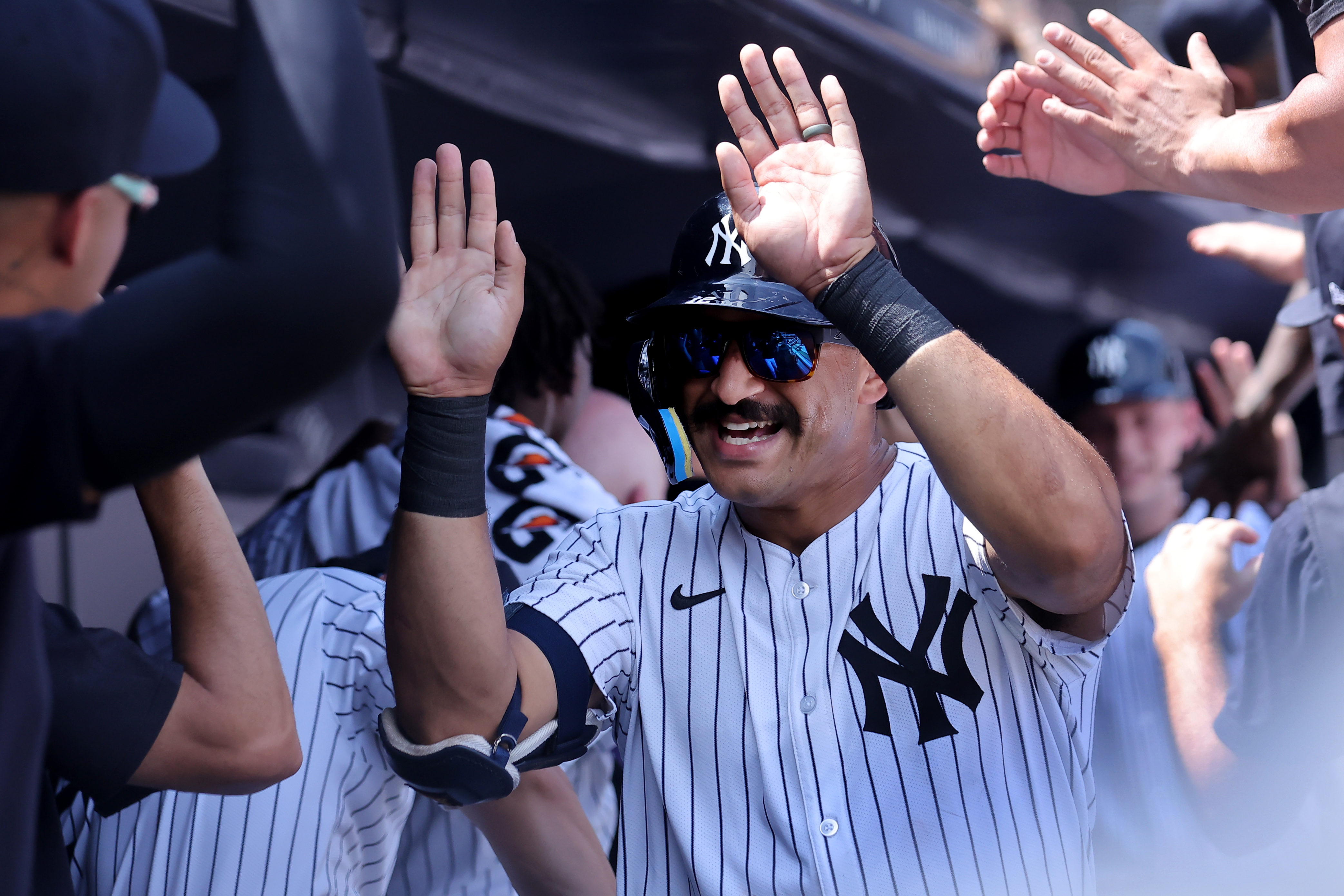Everyone has been quick to mention how the 1996 Yankees overcame a 2-0 deficit in the World Series to defeat the Braves, and while this team doesn’t have the same 26 players, there are some similarities. Both the ’96 and ’24 squads had to battle with Baltimore for the AL East, got out to hot starts before hitting a summer swoon and found their mojo in the postseason at the right time. Furthermore, both teams found themselves in the middle of long title droughts, and while we all know that the 1996 Yankees were the catalyst for a dynasty, this team has yet to prove itself.
If they take anything from that championship squad, it should be that they need to shake things up entering Game 3. As Joe Torre pulled Paul O’Neill, Tino Martinez, and Wade Boggs from the lineup, Aaron Boone needs to make a change in left field with Trent Grisham.
Trent Grisham Needs to Get the Start For the Yankees in Left Field
Walker Buehler has faced Trent Grisham 18 times in his career, and over that stretch, Grisham has an .866 OPS as he tagged him for two blasts in the regular season. Buehler is a significantly worse pitcher than he was in 2020 or 2021, and he’s also facing a version of Grisham, who started to heat up after a brutal start to his season. He hit eight home runs in 55 games with a 115 wRC+ from June onward, and while Alex Verdugo remained the team’s left fielder thanks to his glove, there needs to be a change to the lineup to help spark this offense.
This matchup doesn’t bode well for Alex Verdugo, who has an abysmal .240 wOBA against four-seamers and cutters from right-handed pitching, both of which are huge weapons in Walker Buehler’s arsenal. Trent Grisham on the other hand demolishes those pitches, with a .397 wOBA and 90.9 MPH Average Exit Velocity, so while I think Verdugo is the better defensive left fielder, there’s a clear strategical advantage to making a lineup change in Game 3. Sure, the Yankees would be asking Grisham to come hit after weeks on the bench, but he’s shown that he’s comfortable doing that before.
He had 29 plate appearances over the span of 35 days before hitting a grand slam in Texas and having a three-RBI day against the Pirates on the final day of the season.
READ: Yankees’ veteran infielder reveals the secret to a World Series comeback
Grisham’s ability to do damage on contact and get the ball in the air makes him a threat to leave the yard, and at the bottom of the lineup, he could change the game with just one swing. He was on pace for 26 home runs had he played as often as Alex Verdugo did this season, and while he isn’t what I would consider a strong bat, he does have a chance to run into one and that’s incredibly valuable in the postseason where each and every event has a heightened level of impact on your odds of winning the title.
Another skill that could prove valuable here is Trent Grisham’s patience at the plate, as the Yankees likely swung themselves out of a rally in Game 2 when Anthony Volpe chased out of zone at sliders from Blake Treinen. Had he walked, Trevino’s flyball to left field would have been a game-tying sacrifice fly, and the Dodgers have preyed on the Yankees’ aggression against breaking pitches often in this series.
If the Yankees keep giving the Dodgers free outs on breaking balls, this series won’t make it back to Los Angeles, and having a more patient bat like Grisham who can ambush a fastball might give them a counter to the Dodgers’ pitching strategy. Walker Buehler has a .528 SLG% allowed against left-handed batters with a 6.53 ERA on the road this season, and if the Yankees can throw a patient hitter who has great success against fastballs and cutters at the bottom of their lineup, they’ll make his life a lot more difficult.
The Dodgers have thrown counterpunches early on in this series with Tommy Edman against Carlos Rodon or Alex Vesia against Austin Wells, which forced Aaron Boone to use Jose Trevino in the biggest spot of Game 2. It’s time for the Yankees to throw one right back; and if they look back at the 1996 Yankees, they’ll know that these minor changes can have big results in the World Series.
